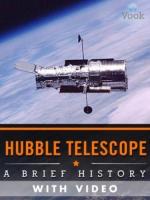|
This section contains 647 words (approx. 3 pages at 300 words per page) |

|
One of the unavoidable problems facing ground-based telescopes if a phenomenon astronomers call seeing: distortions of the image of a celestial object by the passage of its light through Earth's turbulent atmosphere. This the same phenomenon that causes stars to twinkle, and if the seeing is very poor, astronomical observations can be ruined. Above the atmosphere, seeing is eliminated, and the potential for top-quality observations is enormous.
The advantage of observing objects from above the atmosphere was realized by astronomers long before the launch of the Russian satellite Sputnik 1 ushered in the space age. It was not until the 1970s, during the latter phases of the Apollo Moon program, that the Large Space Telescope, as it was then called, came under serious development by the National Aeronautics and Space Administration (NASA) in cooperation with the European Space Agency (ESA).
Integral to the deployment and...
|
This section contains 647 words (approx. 3 pages at 300 words per page) |

|


